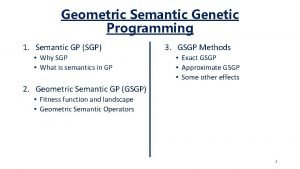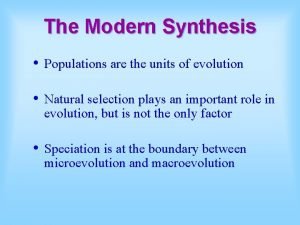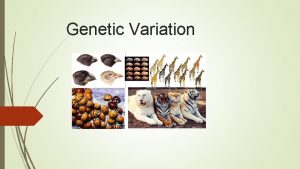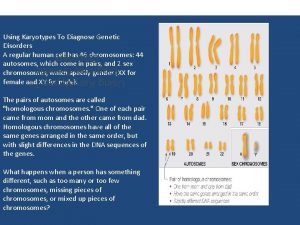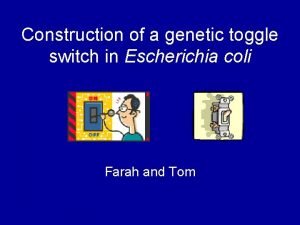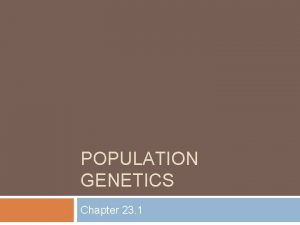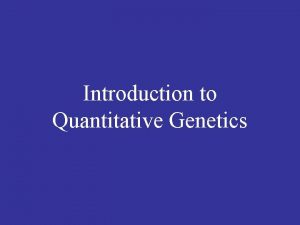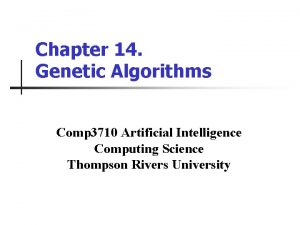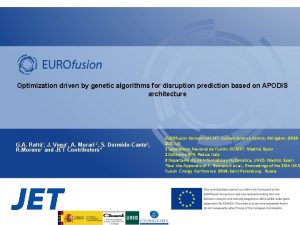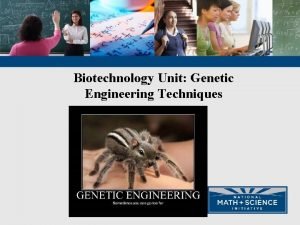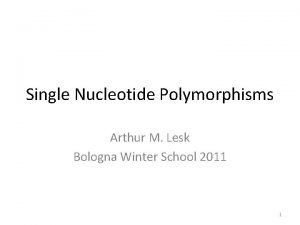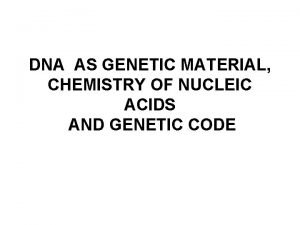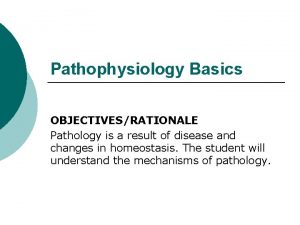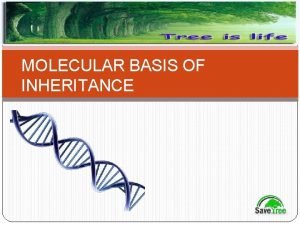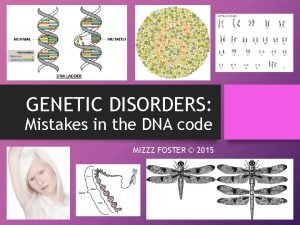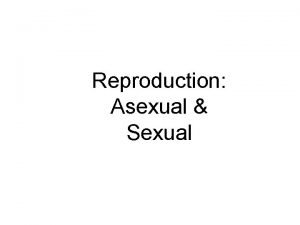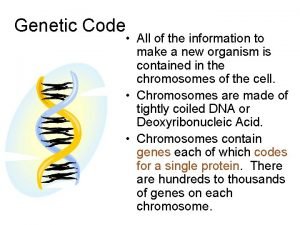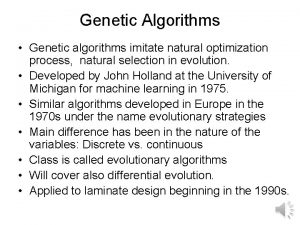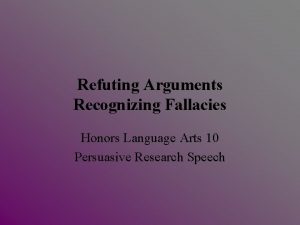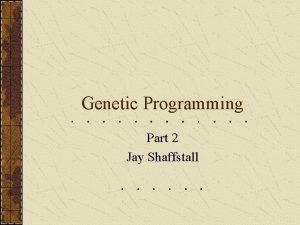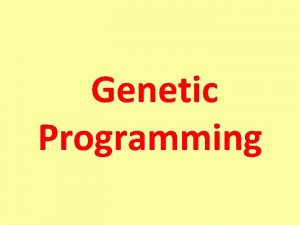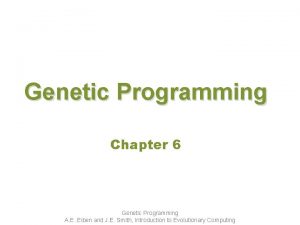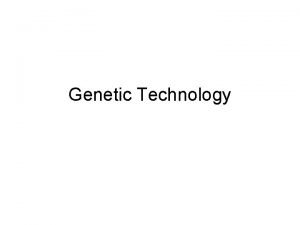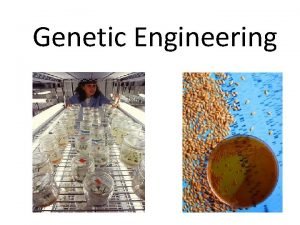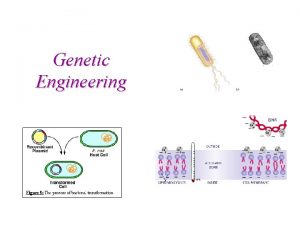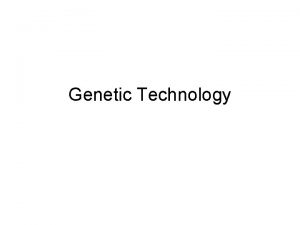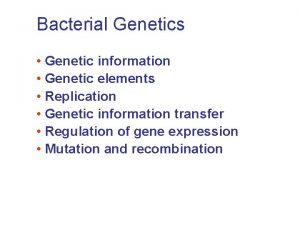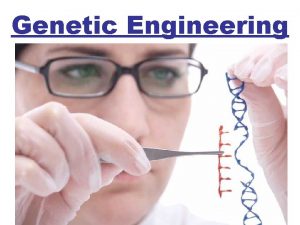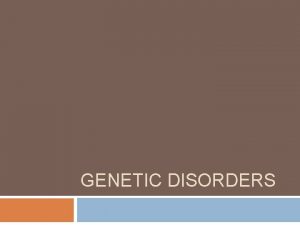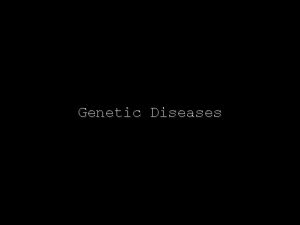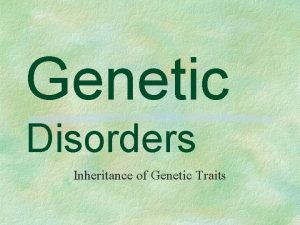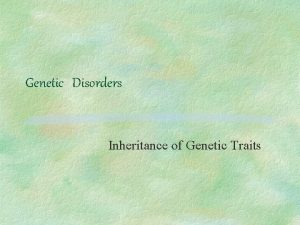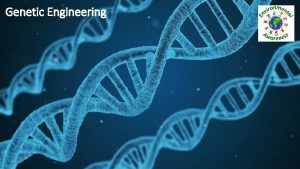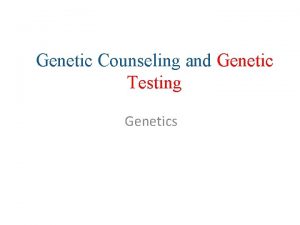What is Genetic Programming Genetic programming is a




































- Slides: 36

What is Genetic Programming? • Genetic programming is a model of programming which uses the ideas (and some of the terminology) of biological evolution to handle a complex problem. … Genetic programming can be viewed as an extension of the genetic algorithm, a model for testing and selecting the best choice among a set of results, each represented by a string.

Definition: Genetic Programming • • One of the central problems in computer science is how to make computers solve problems without being explicitly programmed to do so. Genetic programming offers a solution through the evolution of computer programs by methods of natural selection. Genetic programming is a recent development in the area of evolutionary computation. It was greatly stimulated in the 1990 s by John Koza. According to Koza, genetic programming searches the space of possible computer programs for a program that is highly fit for solving the problem at hand.

Outline of the Genetic Algorithm • Randomly generate a set of possible solutions to a problem, representing each as a fixed length character string • Test each possible solution against the problem using a fitness function to evaluate each solution • Keep the best solutions, and use them to generate new possible solutions • Repeat the previous two steps until either an acceptable solution is found, or until the algorithm has iterated through a given number of cycles (generations)

GA flowchart GP flowchart

Why Genetic Programming? • “It is difficult, unnatural, and overly restrictive to attempt to represent hierarchies of dynamically varying size and shape with fixed length character strings. ” “For many problems in machine learning and artificial intelligence, the most natural representation for a solution is a computer program. ” [Koza, 1994] • A parse tree is a good representation of a computer program for Genetic Programming

Using Trees To Represent Computer Programs (+ 2 3 (* X 7) (/ Y 5)) Functions + 2 3 * X Terminals / 7 Y 5

Genetic Operations • Random Generation of the initial population of possible solutions • Mutation of promising solutions to create new possible solutions • Genetic Crossover of two promising solutions to create new possible solutions

Randomly Generating Programs • Randomly generate a program that takes two arguments and uses basic arithmetic to return an answer – Function set = {+, -, *, /} – Terminal set = {integers, X, Y} • Randomly select either a function or a terminal to represent our program • If a function was selected, recursively generate random programs to act as arguments

Initialisation • Maximum initial depth of trees Dmax is set • Full method (each branch has depth = Dmax): – nodes at depth d < Dmax randomly chosen from function set F – nodes at depth d = Dmax randomly chosen from terminal set T • Grow method (each branch has depth Dmax): – nodes at depth d < Dmax randomly chosen from F T – nodes at depth d = Dmax randomly chosen from T • Common GP initialisation: ramped half-and-half, where grow & full method each deliver half of initial population

Full Method

Grow Method

Randomly Generating Programs (+ …) +

Randomly Generating Programs (+ 2 …) + 2

Randomly Generating Programs (+ 2 3 …) + 2 3

Randomly Generating Programs (+ 2 3 (* …) …) + 2 3 *

Randomly Generating Programs (+ 2 3 (* X 7) (/ …)) + 2 3 * X / 7

Randomly Generating Programs (+ 2 3 (* X 7) (/ Y 5)) + 2 3 * X / 7 Y 5

Selection • Fitness-proportional Selection – all individuals have a chance of being selected at any given point. – the probability that a given individual will be selected is equal to its normalized fitness • Tournament Selection – selecting a number of individuals from the population at random, a tournament, and then selecting only the best of those individuals.

Codes for Fitness-Proportional Selction

Codes for Tournament Selection

Mutation • Most common mutation: replace randomly chosen subtree by randomly generated tree – A function node could for example change its function type or turn into a terminal node. – A terminal node representing a variable could for example change its index and thus in the following refer to another variable. – A terminal node representing a constant could be multiplied with a factor.

Mutation

Crossover/Recombination • Most common recombination: exchange two randomly chosen subtrees among the parents • Recombination has two parameters: – Probability to chose an internal point within each parent as crossover point – Two-point crossover • The size of offspring can exceed that of the parents

Crossover (+ X (* 3 Y)) (- (/ 25 X) 7) + - X * 3 / Y 25 7 X

Crossover (+ X (* 3 Y)) Pick a random node in each program + X (- (/ 25 X) 7) - * 3 / Y 25 7 X

Crossover (+ X (* (/ 25 X) Y)) Swap the two nodes + X * / 25 (- 3 7) 3 Y X - 7

Crossover (Conti. ) • One-point crossover – First the two parent trees are traversed to identify the parts with the same shape, i. e. with the same arity in the nodes encountered traversing the tree from the roots node. – A random crossover point is selected with a uniform probability among the links belonging to the common parts identified in the previous step.

• An important consequences of the convergence property of GP with one-point crossover is that like in GAs mutation becomes a very important operator to prevent premature convergence and to maintain diversity.

Fitness • The fitness measure is the way we define the problem to GP. • The fitness function determines how well a program is able to solve the problem. – Mean squared errors function (MSE) – Coefficient of determination – Variance accounted for function

Symbolic Regression Problem • The following Java code shows how the raw fitness can be calculated for the symbolic regression problem:

Bloat • Bloat = “survival of the fattest”, i. e. , the tree sizes in the population are increasing over time • Ongoing research and debate about the reasons • Needs countermeasures, e. g. – Prohibiting variation operators that would deliver “too big” children – Parsimony pressure: penalty for being oversized

Controlling Bloat • Depth limitation for the generation of individuals in the initial population. • Depth limitation for the generation of subtrees for sub-trees mutation and crossover operators. • Pruning and planting a sub-tree – The worst tree in a population will be substituted by branches pruned from one of the best tree and planted in its place.

Another Examples for Pruning

Problems involving “physical” environments • Trees for data fitting vs. trees (programs) that are “really” executable • Execution can change the environment the calculation of fitness • Example: robot controller • Fitness calculations mostly by simulation, ranging from expensive to extremely expensive (in time) • But evolved controllers are often to very good

What About Just Randomly Generating Programs? • Is Genetic Programming really better than just randomly creating new functions? • Yes! – Pete Angeline compared the result of evolving a tic-tac-toe algorithm for 200 generations, with a population size of 1000 per generation, against 200, 000 randomly generated algorithms – The best evolved program was found to be significantly superior to the best randomly generated program [Genetic Programming FAQ, 2002] • The key lies in using a fitness measure to determine which functions survive to reproduce in each generation

END~
 Genetic programming vs genetic algorithm
Genetic programming vs genetic algorithm Genetic programming vs genetic algorithm
Genetic programming vs genetic algorithm Genetic drift
Genetic drift What is the difference between genetic drift and gene flow
What is the difference between genetic drift and gene flow The founder effect
The founder effect Geometric semantic genetic programming
Geometric semantic genetic programming Perbedaan linear programming dan integer programming
Perbedaan linear programming dan integer programming Greedy vs dynamic programming
Greedy vs dynamic programming What is system programming
What is system programming Integer programming vs linear programming
Integer programming vs linear programming Perbedaan linear programming dan integer programming
Perbedaan linear programming dan integer programming Genetic drift example
Genetic drift example National center for genetic resources preservation
National center for genetic resources preservation Genetic variation
Genetic variation Using karyotypes to diagnose genetic disorders
Using karyotypes to diagnose genetic disorders Genetic material
Genetic material Genetic toggle switch
Genetic toggle switch Genetic drift in small populations
Genetic drift in small populations Why is genetic diversity important
Why is genetic diversity important Genetic book
Genetic book Inheritance of quantitative traits
Inheritance of quantitative traits Genetic diversity
Genetic diversity Fitness function in genetic algorithm
Fitness function in genetic algorithm Fitness function in genetic algorithm
Fitness function in genetic algorithm Genetic engineering
Genetic engineering Pku diet
Pku diet Codon function
Codon function What causes genetic diseases
What causes genetic diseases Rho factor
Rho factor Biobeyond unit 6 genetic blueprints
Biobeyond unit 6 genetic blueprints Westermarck effect
Westermarck effect Mizzz foster
Mizzz foster Advantages of genetic diversity
Advantages of genetic diversity Trace the code genetic code table
Trace the code genetic code table Genetic algorithms
Genetic algorithms Dominant trait quiz
Dominant trait quiz Genetic fallacy
Genetic fallacy





